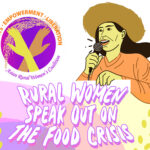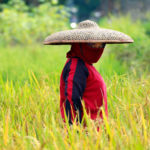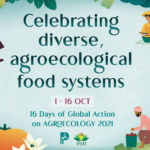Women, pesticides, and land: Towards gender equality and sustainability
International Women’s Day this year, with the theme “Gender equality today for a sustainable tomorrow” chosen by the United Nations, is an opportune time to raise the issue of women’s exposure to toxic pesticides. In particular, how the vulnerability and marginalisation of rural women of the Global South increases with their continued dependency on chemical inputs, and how empowerment and gender equality are better achieved with reduced reliance on pesticides, as well as access to land and resources to allow women to shift to more sustainable alternatives.
The vital role of women in minimising pesticide harms and environmental degradation was highlighted by Meriel Watts, PAN Asia Pacific’s (PANAP) Director of Science and Policy, in an expert paper presented to the UN Women Expert Group Meeting tackling climate change, environmental and disaster risk reduction in preparation for the upcoming 66th session of the Commission on the Status of Women.
“Women, pesticides, land and food lie at the very heart of the intersection of gender, equality, climate change/climate risk, and biodiversity loss and restoration. Yet, nowhere is this fundamental intersection recognised and explored. We hear that poor rural women are some of the most discriminated against, marginalised, and nutrition-poor; but we do not often hear about them in relationship to pesticides and biodiversity,” said Watts.
An estimated 385 million or 44% of the world’s farmers and farmworkers suffer unintentional acute pesticide poisoning every year, excluding suicides and chronic health effects. Unfortunately, it is difficult to estimate how many of these acute poisoning cases involve women. “How many of these 385 million are women? We don’t know. As one of the authors of the paper I can say that we were unable to find sufficient data to estimate the incidence for women. The studies reviewed did not differentiate between men and women farmers and farmworkers,” said Watts.
The lack of gender perspective in occupational health research has been noted by the World Health Organization (WHO) as well: “Researchers have failed to include women in studies, have adjusted for sex rather than examining its role in their data set, and have often not considered gender- and sex-specific factors when designing studies and analysing data,” according to a WHO report on gender inequality and health and safety.
With increasing global pesticides use—a 50 percent increase in the 2010s from the 1990s—impacts on women must be taken into account. Women comprise almost half of the agricultural labour force in developing countries, with a high of almost 70% of employed women in South Asia and more than 60% of employed women in Sub-Saharan Africa working in agriculture.
Women often work as pesticide sprayers in commercial farms and plantations in developing countries. Women workers in plantations across the Asia Pacific region use Highly Hazardous Pesticides—many of which are already banned in industrialised countries where they are produced and exported—under deplorable conditions, such as lack of Personal Protective Equipment or using leaky spraying equipment. Even when not applying pesticides, women are heavily involved in mixing pesticides, harvesting pesticide-doused crops, washing pesticide containers or pesticide-soaked clothes, carrying heavy pesticide tanks for hours, and storing or disposing of pesticide containers.
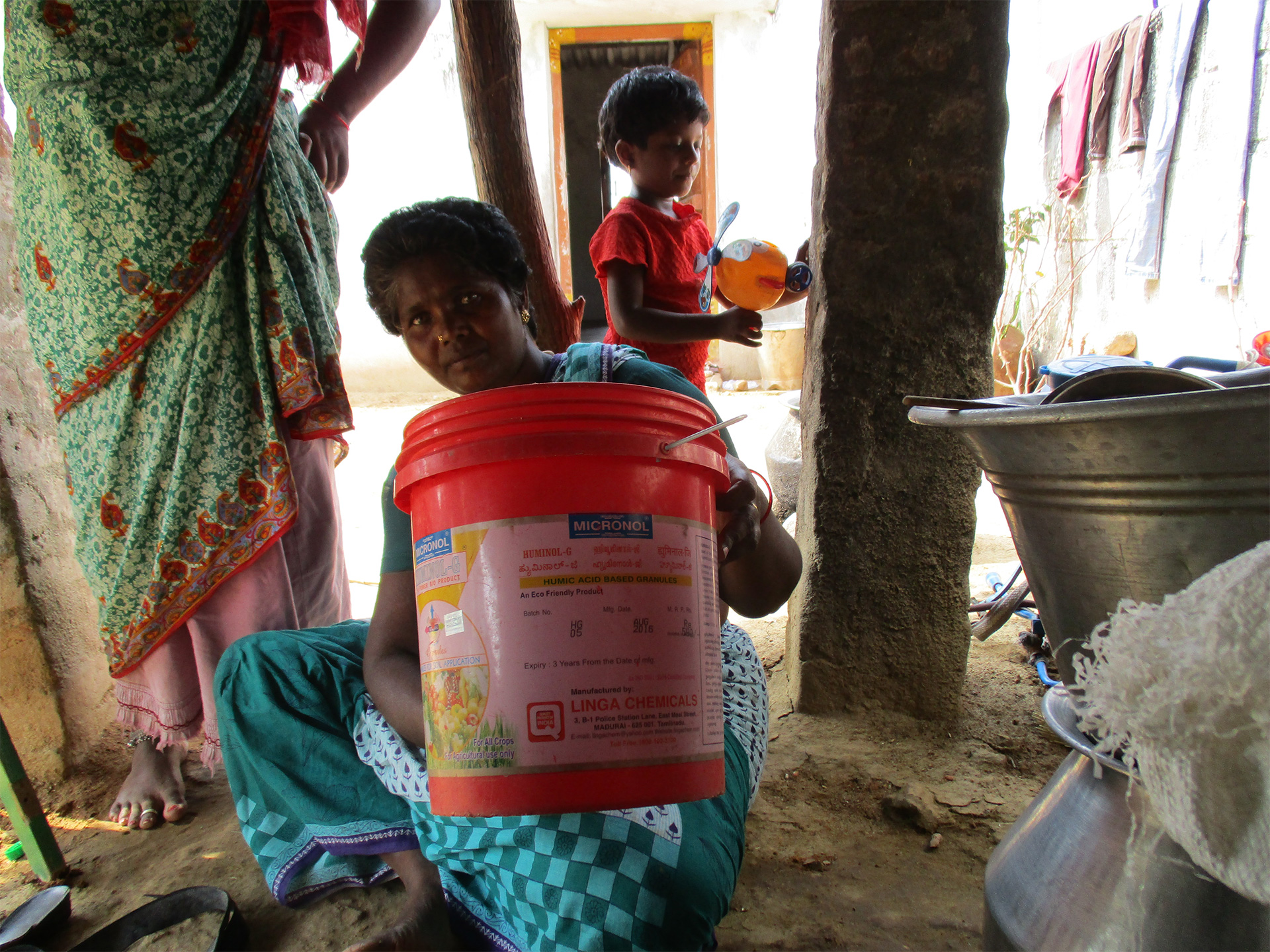
Women often wash used pesticide containers and reuse them at home. (Photo: SRED)
This was evidenced by PANAP’s 2018 study in seven countries across Asia, wherein over 600 women participated in Community-Based Pesticide Action Monitoring. Findings include women in Pakistan mixing granular pesticides with their bare hands; and abnormal menstrual flows and high incidences of stillbirths and miscarriages among plantation workers in Indonesia and the Philippines. It is also common for women workers to continue to spray pesticides while pregnant. For instance, a study among tea plantation workers in Southern India found that 68% of women continued to work up to six months into pregnancy.
It is important to understand how women’s susceptibility to the effects of pesticides differ from men. Women generally have a higher proportion of body fat, and are thus more likely to store pollutants that bioaccumulate in fat tissue. Women may also absorb pesticides through their skin more easily, and once there, fat-loving pesticides may reside in the body longer.
Women have a higher level of hormonally sensitive tissues that make them more vulnerable to the impacts of pesticides, especially those that are hormonally active, or known as endocrine disruptors. Carcinogens linked with breast and ovarian cancer is of special concern for women.
Pesticides adversely affect women’s fertility and reproductive health, with both known and unknown impacts on future generations. Exposure during pregnancy may harm the unborn child; chemicals are passed on from mother to child through breastfeeding. Furthermore, studies in the emerging field of epigenetics show how pesticides may affect inherited physiological traits; such mechanisms of toxicity can be sex-specific, and women obviously play a big role.
Women’s exposure to pesticides increases as their poverty and marginalisation deepens. This is especially true in rural communities in the Asia Pacific where landlessness and neoliberal policies condemn small-scale farmers to chemical-intensive farming incentivised by governments, or to hazardous labor in monoculture plantations. Poverty also further increases women’s vulnerability to pesticides, as toxic effects are aggravated by poor diet and malnutrition (women still ‘eat the last and the least’ in impoverished families).
In this context, it is clear that “gender equality today for a sustainable tomorrow” includes more decisive action to reduce women’s use and exposure to pesticides, while enhancing women’s participation in healthy, equitable and sustainable food production.
Unfortunately, there is still much emphasis given to enabling women’s access to pesticides as a means of achieving Sustainable Development Goals (SDGs). In the Food and Agriculture Organization’s (FAO) 2010-2011 State of Food and Agriculture Report focusing on Women in Agriculture, it was stated that “closing the gender gap on agricultural inputs” could lift 100 to 150 million people out of poverty. A more recent guidance document by FAO and CARE on gender equality and ‘climate-smart agriculture’ also points to women’s limited access to inputs “such as improved seeds, fertilisers and pesticides.” These erroneously suggest that increased access to pesticides leads to women’s empowerment.
On the contrary, pesticides are among the major contributors of biodiversity collapse and the climate crisis, the escalation of which puts rural women at much greater risk of marginalisation and hunger. The role of women as seed custodians, innovators, and caretakers of agro-biodiversity is also vastly undermined by dependence on costly pesticides and commercial seeds, which ties them to certain products and saddles them with loans and mounting debts.
Women, instead, must be supported in replacing the use of hazardous pesticides with agroecology. Policymakers must be reminded of a key recommendation on gender in the Committee on Food Security’s 2019 report on agroecology: “There is increasing momentum in the policy arena for gender transformative actions that address gender inequality in agriculture and food systems. These actions aim to challenge the underlying causes of gender inequality, such as norms, gender relations in households and society, and institutional structures that perpetuate discrimination and imbalances, rather than merely addressing its symptoms. They seek to achieve more equitable involvement of women and girls in decision-making, control of resources and control of their own labour and destiny.”
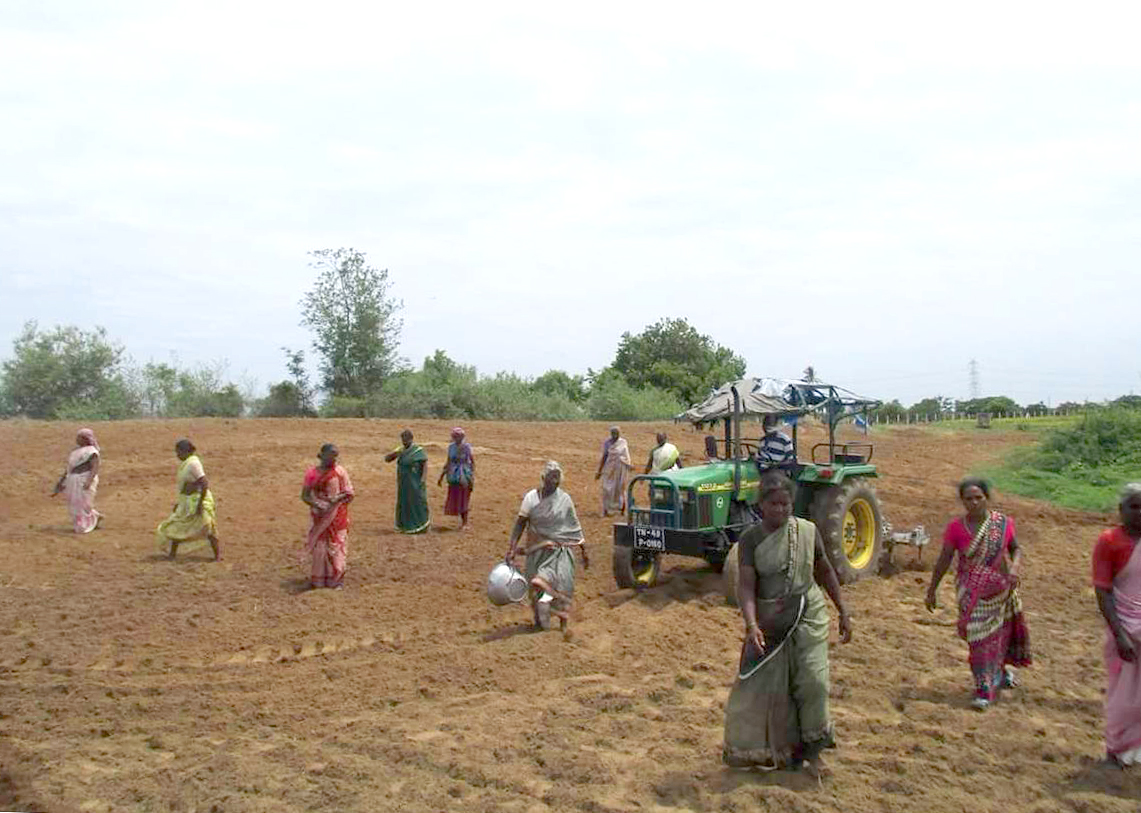
Landless Dalit women have occupied lands and farmed them collectively using agroecological methods. (Photo: SRED)
Indeed, in communities where women have asserted their rights to land, women can more freely determine what crops to cultivate and how to cultivate them. In Tamil Nadu, India, for instance, landless Dalits have organised a collective farming movement and occupied land that has been historically and formally denied to them. Many collectives led by women of the Society for Rural Education are growing organic millets, meeting their families’ food needs, generating income, fostering leadership and minimising their vulnerability to gender and caste-based violence.
As Watts pointed out, SDG 2 of Zero Hunger is not achievable until rural women everywhere are effectively empowered to implement agroecological food production. “Agroecology, and the transformation of food systems to restore biodiversity and regenerate ecosystems, cannot be successful without recognising the absolutely necessity of engaging women producers, recognising their rights to land, appropriate resources, and markets,” she said.
Here are some of PANAP’s recommendations towards this end:
- Continue to strive for women’s rights in all policy platforms relating to agroecology
- Recognise and address the key problem of landlessness of women rural workers, assisting them into land ownership
- Develop policies and programmes that foster women’s engagement in and ownership of agroecological food production that restores biodiversity, regenerates the agroecosystem and especially the soil, and provides resilience against climate change and other disaster risks
- Fund and empower the training of rural and urban women in agroecological food production; recognise and empower women leaders to empower other women.
- Close the data gaps on women experiencing pesticide poisoning, on landlessness.
Finally, there is a need to make visible the invisibility of poor landless rural women in the Global South—and this includes invisible suffering from the impacts of pesticides. Neither ‘gender equality’ nor ‘sustainable tomorrow’ can be achieved at a global scale without addressing the suffering of these women, and taking seriously the need to phase-out and eliminate the use of toxic pesticides.



